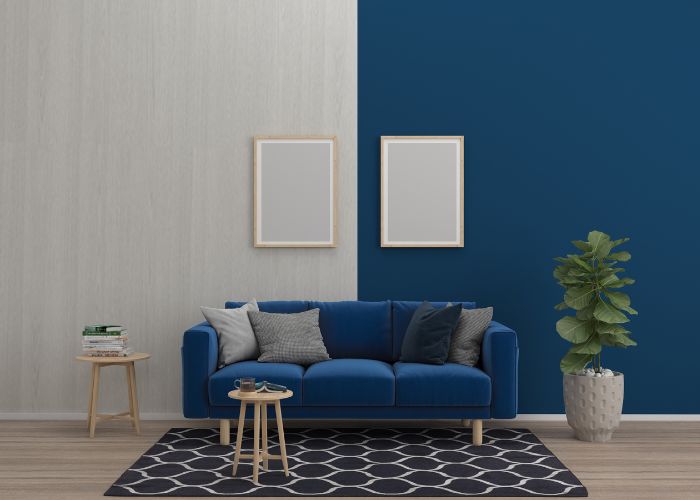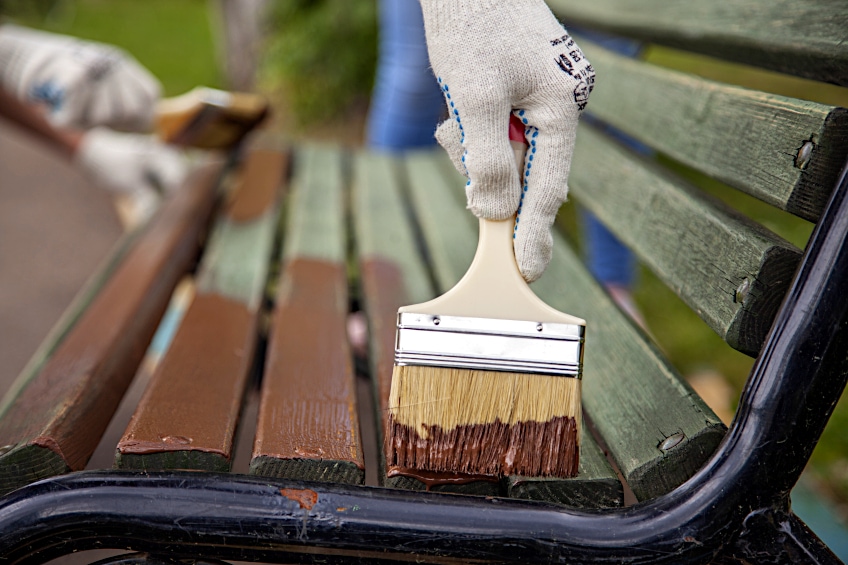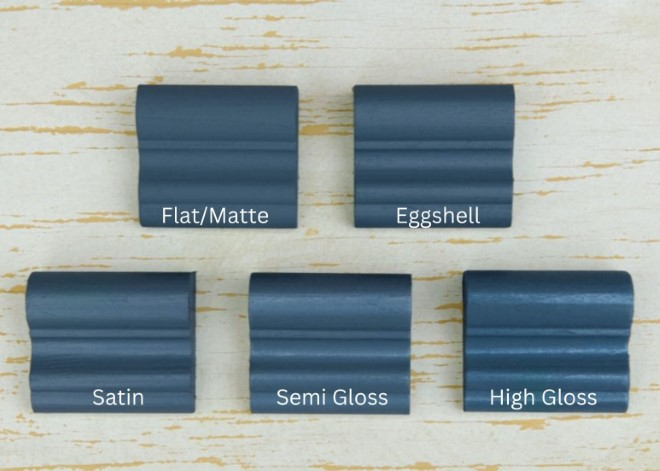The Science Behind Upholstery: Maintenance, Cleaning, and Longevity

Painting is one of the most effective and accessible ways to transform the look and feel of any space. Whether you are renovating your home, redecorating a room, or simply looking to add a fresh coat of paint, understanding the various paint types and finishes is essential to achieving the desired results.
In this comprehensive guide to Painting 101, we will delve into the world of paints, exploring different paint types and finishes, their characteristics, and how to choose the right ones for your projects.
Different types of paints to choose from
Upholstery materials can vary widely, and understanding the science behind them is crucial for proper maintenance and cleaning.
Water-based paints (Latex paints)
Water-based paints, also known as latex paints, have become increasingly popular due to their ease of use, quick drying time, and low levels of toxic fumes.
These paints are primarily used for interior applications, such as drywalls and ceilings, but some varieties can be used for exterior projects as well.
Water-based paints come in three main types:
Acrylic Latex Paint: This is the most common type of water-based paint, featuring a durable finish that resists fading, cracking, and peeling. It is easy to clean and provides excellent coverage, making it an excellent choice for high-traffic areas.
Vinyl Acrylic Paint: With added vinyl content, this type of paint offers enhanced moisture resistance and is suitable for areas with high humidity, like bathrooms and kitchens.
Alkyd Latex Paint: Combining the benefits of water-based and oil-based paints, alkyd latex paints are highly durable, making them a popular choice for trim and other surfaces that require extra protection.
You might be interested: Carpet repair services in London, Ontario

Oil-based paints
Oil-based paints, also known as alkyd paints, were once the go-to choice for interior and exterior applications due to their durability and smooth finish.
However, they have become less popular in recent years due to their strong odor, longer drying times, and higher levels of VOCs (volatile organic compounds).
Oil-based paints are still used for specific applications, such as woodwork and metal surfaces, where their toughness is beneficial.
Chalk paints
Chalk paint has gained popularity for its unique matte finish and easy application process. Its texture provides a shabby chic or vintage look, making it ideal for furniture and decorative items.
One of the major advantages of chalk paint is that it requires minimal surface preparation, as it adheres well to various surfaces without the need for priming.
Different paint finishes to choose from
Flat finish
Flat finish, also known as matte finish, has no shine or sheen, making it ideal for hiding imperfections on walls and ceilings. It offers a velvety appearance and is a popular choice for bedrooms, living rooms, and other low-traffic areas. However, flat finishes are less resistant to stains and may be more challenging to clean compared to other finishes.
Eggshell finish
Eggshell finish falls between flat and satin finishes, offering a slight sheen that adds a touch of elegance to walls and other surfaces. It is more durable than flat finish, making it suitable for spaces that receive moderate foot traffic, such as dining rooms and hallways. Eggshell finishes are also relatively easy to clean.
Satin finish
Satin finish provides a soft sheen, making it an excellent choice for areas that require regular cleaning, such as kitchens, bathrooms, and children's rooms. It offers a smooth surface and hides imperfections better than higher-gloss finishes, making it a popular choice for walls and ceilings in many homes.
Semi-gloss finish
Semi-gloss finish has a noticeable shine, reflecting more light than satin finishes. It is highly durable and easy to clean, making it an excellent choice for trim, baseboards, doors, and cabinets. The reflective properties of semi-gloss finishes can add a touch of sophistication to any space.
Gloss finish
Gloss finish is the shiniest and most reflective paint finish, creating a high-gloss surface that is easy to clean and resistant to moisture. It is commonly used for accents and high-traffic areas like railings and furniture. However, gloss finishes also tend to highlight surface imperfections, so proper surface preparation is crucial before application.
What's the right paint type and finish for you?

Selecting the right paint type and finish depends on several factors, including the intended use of the space, the amount of foot traffic it receives, and personal preferences regarding aesthetics and ease of maintenance. Here are some essential tips to help you make the right choices:
Consider the Location: For high-moisture areas like bathrooms and kitchens, consider using moisture-resistant paints like vinyl acrylic or semi-gloss finishes. For low-traffic rooms or areas with surface imperfections, flat or matte finishes can be ideal.
Test Before Painting: Always test a small area with your chosen paint type and finish before covering an entire wall or surface. This will allow you to assess how the color and finish look under your lighting conditions and against your furnishings.
Surface Preparation: Properly preparing the surface before painting is crucial for achieving a smooth and long-lasting finish. Sanding, patching, and priming the surface as needed will ensure better paint adhesion and a more professional result.
Consider VOC Levels: If you are sensitive to odors or concerned about indoor air quality, opt for low-VOC or zero-VOC paints. Water-based paints generally have lower VOC levels than oil-based paints, making them a more eco-friendly option.
Use Quality Paint and Tools: Investing in high-quality paint and painting tools will yield better results and save you time and effort in the long run. Quality paints provide better coverage and color consistency, while professional-grade brushes and rollers ensure a smoother application.
Painting cost considerations before you decide
When embarking on a painting project in your London home, it's important to factor in the cost of materials, labor (if hiring professionals), and any additional expenses that may arise.
Here are some key cost considerations to keep in mind:
Paint Quality: The quality of paint can significantly impact the cost of your project. High-quality paints with better coverage and durability tend to be more expensive, but they often provide better long-term results and require fewer coats, saving you time and money in the long run.
Quantity of Paint: Calculate the amount of paint you'll need based on the square footage of the area you plan to cover. Measure the walls, ceilings, or other surfaces carefully to avoid underestimating and having to purchase additional paint later. Many paint brands offer online paint calculators to help you estimate the required amount accurately.
Paint Type and Finish: Different paint types and finishes come at varying price points. While water-based paints are generally more budget-friendly than oil-based paints, the specific type and finish you choose can also impact the cost. For instance, specialty paints like chalk paint might be pricier than standard latex paints due to their unique properties.
Brand and Manufacturer: Established paint brands with a reputation for quality often come with a higher price tag. While it may be tempting to opt for cheaper, lesser-known brands, keep in mind that the overall performance and longevity of the paint can be compromised.
DIY vs. Hiring Professionals: Deciding whether to tackle the painting project yourself or hire painting professionals in London, Ontario will also affect the cost. DIY painting can save you on labor expenses but requires an investment in time, effort, and proper tools. Hiring handyman near you ensures a more efficient and polished result, but their services come with labor costs.
Surface Preparation: Neglecting proper surface preparation can lead to unsatisfactory results, such as paint chipping or peeling prematurely. While it may seem like an extra expense, investing in proper sanding, patching, and priming materials will contribute to the longevity of the paint job.
Additional Materials: Depending on your project's scope, you may need additional materials such as painter's tape, drop cloths, brushes, rollers, and paint trays. These items can add to the overall cost but are essential for a smooth and efficient painting process.
Special Effects and Techniques: If you plan to incorporate special effects or techniques, such as faux finishes or intricate stenciling, be prepared for additional expenses. These unique painting approaches often require additional supplies and more intricate workmanship.
Environmental Considerations: If you prioritize eco-friendly options, low-VOC or zero-VOC paints may cost slightly more than conventional paints. However, the benefits of improved indoor air quality and reduced environmental impact can outweigh the additional expense for many individuals.
In summary...
Understanding different paint types and finishes is essential for achieving successful painting projects that enhance the beauty and functionality of your home.
Whether you opt for water-based paints like acrylic latex or experiment with chalk paint for a vintage touch, selecting the right paint type and finish can significantly impact the final outcome.
By considering the location, conducting test samples, properly preparing the surfaces, and using quality materials, you can achieve professional-looking results and create a space that reflects your unique style and personality. Happy painting!
If you're looking for a professional painting company near me in London, Ontario that can help you out with all kinds of interior and exterior painting services, head on to Canada Home Maintenance. They've been in the business for over 50 years. Feel free fill out the form and get a FREE quote.
For more home maintenance tips, we have prepared helpful resources for you:



